Dr. Meredith Kieschnick was among the first physicians in the U.S. to hear the term, "adverse childhood experiences". That was in 1998, early on in her career as a pediatrician, when the CDC-Kaiser Permanente Adverse Childhood Experiences Study (ACE Study) published its initial findings in the American Journal of Preventive Medicine.
“I attended a conference at which (Dr. Vincent) Felitti spoke,” she recalls. Felitti, at that time director of the Health Appraisal Center at Kaiser Permanente in San Diego, along with Dr. Robert Anda of the CDC, was one of the two principal investigators of the ACE Study. Kieschnick was fascinated by the study’s results that showed a strong and remarkable link between childhood trauma and the adult onset of chronic disease, mental illness, violence and being a victim of violence. “But I was at a loss as to what to do differently or how to help children by using this new knowledge.” (ACEs science 101, Got Your ACE, Resilience Scores?)
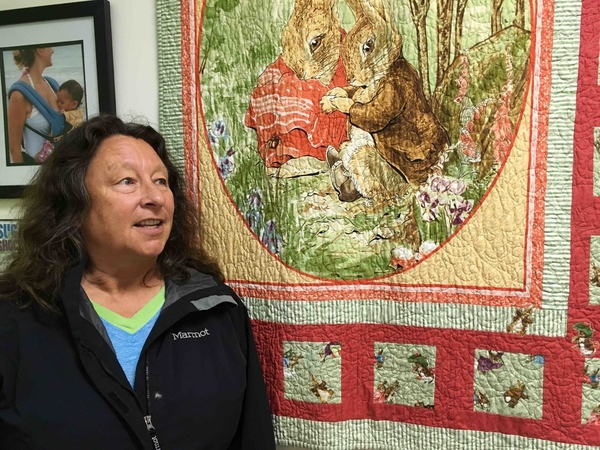
But it was a research project she volunteered for that stuck with her and later led her to jump at an opportunity to incorporate ACEs science into her work. The research project looked at the correlation of ACEs and osteoporosis and osteopenia.
“It was a very personal experience, screening positive on an ACE test, and then finding out that I had osteopenia at a young age,” says Kieschnick, “I had no other risk factors — none — for low bone density. So that brought it home.”
Kieschnick went on to become medical director at what was then Roseland Pediatrics in Santa Rosa, Calif., where she worked for 30 years.
Fast-forward to 2019. The clinic, which has about 7,000 patients, newborns to 18 years old — plus their parents or caregivers — counts itself as one of the first wave of pediatric clinics in the world to take the giant leap into a new kind of medical care, one that integrates trauma-informed practices based on ACEs science.
Since 2014, it has completed more than 11,000 screenings for parents and children. It doubled its behavioral health staff from one to two and changed the way they were integrated into the daily workflow. It hired a community resources coordinator to arrange referrals for housing, employment, transportation, drug rehab and other social services. Before screening its patients for ACEs and resilience, it created a parent advisory group that decided how and where parents would fill out the surveys. The clinic integrated trauma-informed practices in its workforce — all staff have taken the ACE and resilience surveys (the same ones they ask their patients to fill out), and they integrated self-care practices.
After leading the integration of practices based on ACEs science into what is now called Santa Rosa Community Health Pediatric Campus, Kieschnick retired. Dr. Deirdre Bernard-Pearl, who had participated in the transition, now in its fifth year, heads the clinic. She speaks with pride about how the clinic successfully made the transition to a trauma-informed organization in the mostly low-income Latinx immigrant community that it serves.
The bottom line? “We’ve embraced this, and we’re not going back,” says Bernard-Pearl. “ACEs screening has helped us address the root cause of so many adult health issues, and we think we’re creating a healthier community by doing this work.”
This is the story of how Roseland Pediatrics, now SRCH Pediatric Campus, transformed its clinic into a modern ACEs-science and trauma-informed practice. Telling their story now is particularly relevant because, in California, the state soon will provide financial support for many of the 5,000 pediatricians in CA to screen for childhood adversity. If ACEs screening is successful in California, it will inspire other states to do the same for the other 85,000 pediatricians across the country.
As Kieschnick and Bernard-Pearl can attest, successfully screening for ACEs and resilience is much more complicated than having patients fill out a couple of forms.
This History of Change
Real, successful change takes someone who’s willing to stick her neck out, say: “We’re doing this!” (aka, a leader). This leader has to figure out how to make change happen, to seek out and hire people to work with her to carry out the changes, and to juggle all this in addition to her regular work. Kieschnick did all that. She was also fortunate to live and practice in Sonoma County, Calif, which was emerging as a quiet hotbed of ACEs-science awareness that was spreading among the public health, social services and healthcare communities. In 2014, Felitti did a presentation for this community, which inspired even more people to engage in its nascent ACEs movement.
Change can also require money. But not as much as you might think. For local communities, think thousands, tens of thousands, sometimes hundreds of thousands over several years, but not millions, billions or even bazillions. In 2014, Elsie Allen Health Center, where Kieschnick was also medical director, received a $50,000 grant from Kaiser Permanente Northern California Region to integrate the original ACE Study survey for students at Elsie Allen High School, and then another $50,000 the following year to integrate a souped-up version that was more targeted to teens.
The results vaulted Kieschnick into action. “The practitioners at Elsie Allen were really surprised at the teens’ willingness to talk about this stuff,” she says. “And we got all this new information. When they asked the teens, ‘Why didn’t you tell us before?’, the teens responded: ‘You never asked.’”
Integrating ACEs screening in a high school health clinic is one thing. Integrating it into a busy pediatric practice with 30 staff members and 7,000+ patients, most of whom are low-income immigrants from Central America who live extraordinarily stressful lives, is another. But Kieschnick wanted to figure it out. With the help of a grant writer at Santa Rosa Community Health Center, “I somehow got lucky and found two grants to support it,” she says.
One grant enabled the clinic to join the Pediatric Integrated Care Collaborative, a trauma-informed learning collaborative funded by the U.S. Substance Abuse and Mental Health Services Administration (the largest US agency you never heard of) and administered by the Johns Hopkins Bloomberg School of Public Health. They joined nine other teams, including one from the Center for Youth Wellness led by Dr. Nadine Burke Harris, now California’s first surgeon general, for an 18-month training that would result in the clinics developing their own trauma-informed practices.
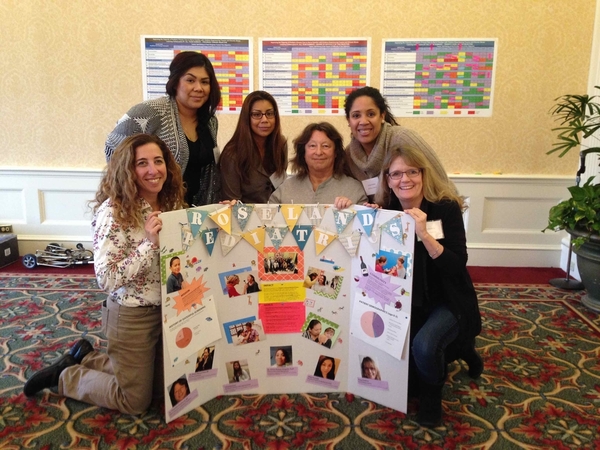
The grant enabled Kieschnick, Bernard-Pearl, a parent, a medical assistant, a nurse, one behavioral health provider, and a receptionist to participate in monthly conference calls, three intense weekends with staff from the nine other clinics, and projects.
“That was so great to be away from work and to knock this out,” says Bernard-Pearl. “We were able to have a very rapid sharing/learning experience with the rest of the teams from around the country.” They spent six months studying and developing their approach, and six months training their staff.
The learning collaborative dovetailed with a grant from the U.S. Health Resources & Services Administration’s Maternal & Child Health that provided $50,000 a year for five years, and that brought matching funds from First 5 Sonoma County.
With that money, they were able to hire another behavioral health specialist and a community resource specialist.
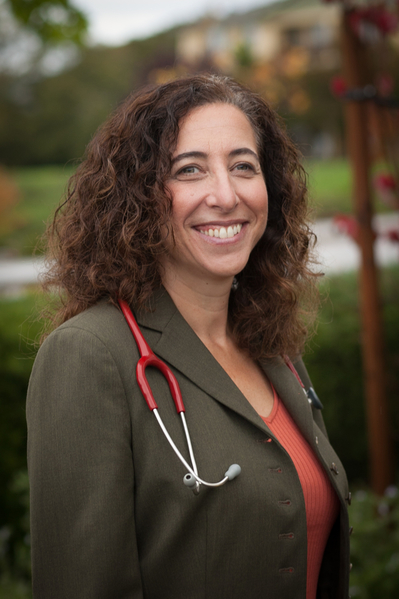
“The trauma-informed changes we’ve made have become part of our system and culture,” says Bernard-Pearl. “The work we’ve done is sustainable.” The only big change that they’re hoping for now concerns a billing issue. Although mental health providers can bill Medi-Cal for their services, they still can’t bill on the same day that a pediatrician sees the same patient. That means when a pediatrician is dealing with a patient’s mental crisis during an appointment and calls in the mental health provider, the mental health provider’s time cannot be billed. Legislation — SB66 (Atkins) —is pending in the California legislature to change that.
Giving Parents a Say
Kieschnick wanted parents to embrace ACEs science, to make it their own. To do that, she knew that parents needed to be educated about ACEs science, including resilience, and that they should be the ones to decide how ACEs and resilience screening would work. She and other staff members made a presentation about ACEs science for the clinic’s parents’ advisory group that they had created as a result of the learning community at Johns Hopkins.
“The parents got it immediately,” recalls Kieschnick.
Then she asked the advisory group two questions: Do you think other parents would want to know about this? The response was overwhelmingly “Yes!” The second question was: How should we administer the survey? Face-to-face? In the waiting room? On paper? What else should we consider?
The parents decided that they wanted someone kind and caring to give them the paperwork and to explain that everyone fills out a survey. They wanted the survey to be done in the exam room, and they wanted someone they had a relationship with to go over the answers with them.
“We followed their suggestions to the letter,” says Kieschnick.
At the top of the survey, which are attached at the bottom of this article, are these words:
Health and wellness can be affected by difficult life experiences. We want to help you if you answer “yes” to any of these questions.
Please circle “yes” or “no” for yourself, and for your child. It’s ok to not answer any questions that seem too much for you. We promise to keep your answers confidential unless there is actual physical abuse or sexual abuse taking place.
As many organizations that realize that adverse childhood experiences are not limited to the 10 in the ACEs survey, the clinic added other ACEs questions to their 12-question survey, including asking if a family member had been deported, or if they had ever been homeless. The eight-question resilience survey asks such things as: Does the family talk about difficult problems together? Do they have a place to go for emotional support? Both forms also ask if there is anything else they wanted to tell their pediatrician about their lives.
The clinic decided to screen parents and children at the same time: Parents answer a survey for themselves and another survey for their children. Kids 12- years-old and older fill out their own surveys. Children fill out a new survey every year.
Patients are given time to answer the questions before the pediatrician or pediatric nurse practitioner enters the exam room. Then the pediatrician asks them about their child and how their lives are going, thanks them for answering the questions on the survey, acknowledges that the questions can be difficult, and goes over the survey.
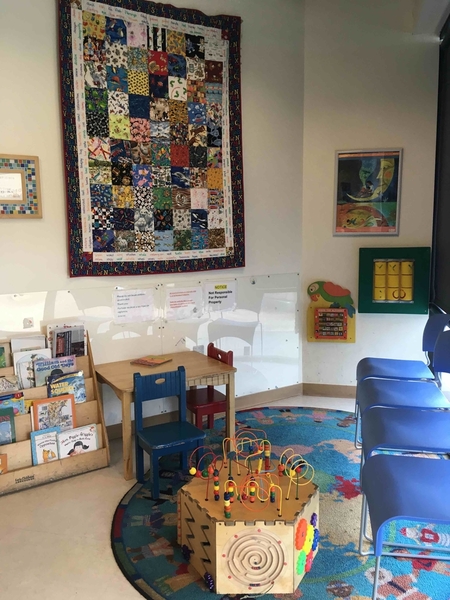
The conversation immediately creates a safe place for them to be honest and truthful, to tell the pediatrician about what’s happening, and about the work they’ve done or not done on a problem, says Kieschnick.
“Most have gotten it, that their childhood trauma has affected them,” she says. “It’s made it a lot easier to get to the heart of the matter, to say, ‘Let’s get this on the table and help you with it.’” Anyone who has one positive answer to any ACE, as well as any other stressors, is offered help, whether it is dealing with bullying at school or not enough food at home.
“I actually feel very good that they’re doing this,” says Martha Almeida, a member of the parents’ group. “I like it because it’s a safe place for a young adult or teen to feel comfortable asking questions that they might not want to talk about at home. It’s good for parents, too, because they can understand a lot of their kids’ behavior. I even shared a copy of the survey in English and Spanish with a social worker so that she can pass it on.”
Integrating trauma-informed and resilience-building practices based on ACEs science has made it easier to understand what’s happening with their patients, says Kieschnick. “I knew all along when someone was really struggling with stuff, but until it had names, we didn’t always know how to describe it. Now, we can have a conversation with parent.”
And they can see progress, she says: “A parent will circle five ACEs for herself, and when she goes through her child’s survey, she circles more no’s than yesses, and already generationally, you have a change.”
The clinic’s behavioral health providers have a sign on their door that says: “Interrupt me”, in case a pediatrician needs them to provide advice immediately. One time, when a mother circled domestic violence on the survey for herself and her two children, Kieschnick decided that “I didn’t want to engage without a therapist there because the kids were in the room. When their mom pulled her shirt aside to show the bruises, the kids started crying. We made a police report, and made sure the kids and mom were safe and got counseling. When there’s a crisis in the family, if they don’t see someone extending a helping hand, it’s going to be bad to let them leave the clinic.”
Even though they began asking about family violence in 2009, since the clinic began using the ACEs and resilience survey, it has had more reports of domestic violence. That’s because of the trust that’s engendered by having a conversation about their lives instead of just filling out questions on a form, says Bernard-Pearl.
When they began using ACEs and resilience screening, she says, “a lot of us expected to use the same medical model as other screenings: You get a positive response, you refer for intervention. What’s really different is that many of our patients and families who have ACEs may not be ready to do something, or they have already addressed it. We’ve learned to not make assumptions about what people need.”
The tool has also helped medical providers to be more sensitive to patients in clinic, says Bernard-Pearl. “It’s sensitized us to understand that a lot of people have experienced trauma. They might have more vulnerabilities undressing for exams, among other things. Before we started this project, I thought I knew my patients well. What I’ve found for a lot of families is that I’ve learned a ton about their parents and a lot about them. It’s deepened our relationship to find out about these difficulties. People almost never refuse to answer our questions. It’s been our experience that people appreciate us asking these questions. It gets them thinking about health in a different way.”
And just as ACEs screening has expanded their awareness of family violence, it’s changed the clinic’s approach to dealing with ADHD. “I’ve had a number of patients who’ve had issues with attention problems in school,” explains Bernard-Pearl. “A student can’t sit still, isn’t able to focus. Their teacher asks the parent to get their child evaluated for ADHD.” Before the clinic screened for ACEs, an ADHD diagnosis was done separately. Now, the pediatricians know that ADHD and ACEs can look almost identical. So, now when a teacher asks for an ADHD screening, the pediatricians screen for ACEs at the same time.
“Every week we find something important that wouldn’t have found out,” without the screening, she says. Usually the biggest objection that she hears when she trains other medical providers is that screening for ACEs will take too much time. “That’s a fair concern,” she says. “What we’ve found is that because we get all this information right up front, it’s an efficient way to find out about some serious health concerns. I ask the people I’m training: ‘Would you do adult care without asking about smoking?’ And I get some resonance and recognition. It doesn’t add that much time and it’s tremendously valuable.”
At the clinic, pediatricians began educating and asking patients about ACEs and resilience screening on September 1, 2015. By March 1, 2016, 1,200 people had filled out the ACE/resilience questionnaires. The first to be screened were four-month-babies and their parents, and annual assessments were scheduled. They also screen any time that a patient wants to talk about their trauma, and if a child comes in with behavior issues.
To date, the clinic has done 11,296 ACEs and resilience screenings. Since children are screened once a year, that number does not represent the clinic’s total number of patients. In fact, that number represents 68.9 percent of the clinic’s patients. Bernard-Pearl’s goal is to reach 100 percent screening.
Unlike some clinics that have a cut-off for the number of ACEs that triggers intervention, says Kieschnick, “we’re less focused on the number of ACEs than any ACE. If there’s one ACE, we ask, ‘What kind of help do you need? Because there’s a resilience questionnaire on the flip side of the ACEs survey, we are educating families about protective factors at the same time we’re screening for ACEs.”
The interventions range from therapy to providing housing. The resource coordinator developed lists of resources from around the community, and made personal connections with staff in other organizations. “Our staff is adept at finding things too,” says Kieschnick. “Often, our front office staff get asked for help even before any trauma screening has occurred — families confide in them.”
The clinic has made 2,561 referrals; 1,874 were for mental health, and 687 were for community resources.
The clinic also offers mindfulness classes (with support from the Sonoma County Resilience Collaborative), yoga classes, and girls’ groups, and it collaborates with Elsie Allen High School to support students and teachers who deal with trauma.
Starting Young
Another service that Pediatric Campus added during this transition was a person who specializes in infant mental health and bases her work on attachment theory. “Her whole approach is trauma-informed,” says Bernard-Pearl. “It’s a pretty amazing project. She helps parents learn about communicating with their babies from the very beginning to set them on a positive path with parenting. It’s important, because the majority of our parents have a number of ACEs. She provides super-early intervention.”
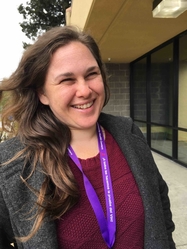
“I usually see babies when they’re two weeks to a month old,” says JulieAnn Steinberger, although the pediatricians will bring her in anytime in a child’s early years if necessary. When this licensed clinical social worker meets with the families for the first time, she watches how caregivers interact with the infant, and how the infant interacts with the caregivers.
“It isn’t a medical exam,” says Steinberger. “With the parents, I’m looking at the neat things babies do. If they’re sleeping, we talk about sleep protective factors. If they’re easy to wake, we’ll talk about the startle response. I look for risk factors and protective factors. If the family is under a lot of stress, financial or emotional, that may impede their ability to tune into their baby. If the baby isn’t tuning into the caregiver and both seem a little detached, that’s a risk factor that needs addressing.” All this offers parents a window into the temperament of babies and how to meet their baby’s needs. Steinberger also assesses each parent for postpartum depression and anxiety, and usually will give parents the Edinburgh Postnatal Depression Scale, and then they’ll talk about it. If parents need help, she’ll provide mental health treatment at the clinic and provide referrals, if necessary, including to community agencies that provide housing, child care, transportation, etc.
If the parents have other children in the clinic, she’ll do an ACE screening. If not, she’ll wait until another visit. If the family has engaged in ongoing treatment, she often facilitates an activity that guides the parents to look at their own early childhood in comparison with their baby’s.
Most of the time, Steinberger sees families only once or twice — enough to ensure that they’ve started down on a solid path to healthy parenting. “Families usually just want space to talk about their worries,” she explains. They feel very vulnerable because of the intensity of this time, she says. She validates their concerns and provides reassurance, often by showing them simple ways that babies attune to their parents, as well as highlighting the love and desire their baby is already exhibiting toward them.
“Often I’ll hold up a baby who’s awake,” says Steinberger. “I speak on one side, the baby’s caregiver speaks on the other, and the baby turns their head to the caregiver’s voice. This ignites for the family these feelings of love — ‘My baby knows me and prefers me!’ It’s often so hard for parents to see that when they’re sleep-deprived. It isn’t always easy for a parent to see a baby’s attachment to them. And seeing it unleashes a different level of closeness.”
However, if there are things that don’t feel great, she says, such as a mother or father not looking at their baby while feeding them or maybe not even holding the baby while feeding, that’s a red flag for potential mental health concerns in the parent and/or attachment risks. When Steinberger sees this, she explores ways to support closeness between a parent and their baby. There’s a good reason for this — the overwhelming body of evidence about how depression impedes attachment between parent and child, which can lead to poor self-esteem, impairment in forming relationships, mental illness and decreased resilience for these babies. Without intervention, these problems may persist throughout their lifetime and open the door for them to suffer additional ACEs, says Steinberger. Because the risks are so grave, it’s important to intervene as early as possible. She’ll meet with a mother or father as long as necessary to solidify that attachment.
“Generally, I am really heartened by how many parents of babies there are who just get it,” says Steinberger. “They really get how important it is to be really present and attuned. Regardless of other stressors, they’re really in this place of tremendous love and dedication, making big sacrifices that come with having a baby.”
It's Not Just About Patients' ACEs...It's About Clinic Workers' ACEs, Too
“It was really obvious to me from the beginning,” says Kieschnick, “that unless we took care of ourselves, that we were going to experience vicarious trauma and some stress not just from the time involved in practice, but from what we’d be hearing. I know my people. I helped hire every one of them. People come with a great desire to help, but they also come with their own experiences with trauma.”
The entire staff took the surveys together, not only to understand their own ACEs and resilience, but to process how it felt being asked those questions.
“We had everybody complete the ACE questionnaire for themselves,” says Bernard-Pearl. “It was a very emotional and powerful experience for us. There were a lot of tears at that training.” The exercise helped them understand more about themselves, each other and to strive to be sensitive to each other’s needs. They learned not to make assumptions about each other’s behavior. If someone’s having a bad day, people offer support and an ear. This new knowledge about human behavior has deepened their curiosity about themselves and their co-workers.
If new staff don’t know about ACEs science, they’re educated about it. “It’s definitely part of our onboarding process,” says Bernard-Pearl, who’s developing a module about ACEs science and trauma-informed practices to be used for new employees and annual training.
Some of the other ways they’ve integrated a trauma-informed approach for their organization is to prominently position a big suggestion box in the office, and to try to carry out every idea that’s submitted, including decorating the staff bathroom to make it a more pleasant place. They also began providing more food for the staff, including lunches. They tried a support group for providers led by a therapist, but “it kind of bogged down,” says Kieschnick. “People didn’t want to talk about experiences with their patients. They didn’t want to talk about vicarious trauma with a therapist present. It was too vulnerable for them. My sense is that the regular provider meeting was enough. They’ll also talk one-on-one with another provider.”
The parent advisory group meets every two months; four to 10 parents attend regularly. Staff from community service programs are invited to clinic staff meetings so that they can work together to figure out how best to make referrals. The clinic hosts celebrations for families, such as Dia de los Muertos (Day of the Dead), and they serve healthy snacks once a month.
A Few Bumps in the Road
During big changes like this, organizations learn and adjust along the way. It’s a little like building a ship as you’re sailing it. “It was a lot of work to figure this out,” says Kieschnick, mainly because, for a lot of the details, there were no existing guidelines or examples — they had to figure out what worked best for their organization and the patients they serve.
One change they made was in behavioral health. “We were too eager to schedule appointments,” says Kieschnick. “As a result, there were a huge number of no-shows.” Instead of doing a warm hand-off — introducing the patient to a counselor — the pediatrician was giving the patient the counselor’s card and scheduling a therapy session. Now, they make sure to ask patients if they’re interested in meeting a counselor and, as often as possible, to do that face-to-face introduction so that patients are more likely to engage with services. They also understand that patients may want to think about it before doing anything.
They also learned something important about screening adolescents, says Bernard-Pearl: “We were seeing that their ACEs scores were very low, lower than we expected. We wondered if having their parents in the exam room was making a difference.” They did a pilot study of teens who did the ACE and resilience surveys without their parent in the room, and sure enough, the ACE scores went up. They changed their procedure to have teens take the surveys without parents in the room, and then invite the parents in later. “That was a good learning experience for us,” says Bernard-Pearl.
An employee added to the mix at the beginning of the transition — the community resource coordinator — was let go in February, because of budgeting issues that Santa Rosa Community Health (SRCH) faced after the wildfires. By the time she left, she had helped the clinic identify and develop personal connections with local providers, so that, so far, other staff are able to continue referrals.
All in all, the transition has been incredibly successful, so successful that Bernard-Pearl has been training health care providers on other SRCH campuses, with the goal that the entire system become trauma-informed over the next year. The clinic is participating in a two-year Resilient Beginnings Collaborative, a project sponsored by the Center for Care Innovations and Genentech Charitable Giving, that’s addressing childhood adversity in pediatric settings in the San Francisco Bay Area.
Bernard-Pearl was also selected to participate — along with 31 other clinicians — in the California Health Care Foundation 2018-2020 class of leadership fellows. The class comprises physicians, nurse leaders, pharmacists, psychologists, academicians, etc. Bernard-Pearl is focusing on teaching fellows about ACEs and resilience science and screening, as well as spreading information about ACEs science throughout SRCH. After her first presentation, some told her that they had never heard about ACEs science and wanted to know how to incorporate it into their practices.
“There’s an acceptance of this approach,” says Bernard-Pearl. “We’re at the point where it’s hard to imagine not asking about and not getting this information. We now have opportunities to be more proactive about earlier intervention in trauma and doing what we can to protect children from further trauma. These changes have impacted our approach here quite a bit.”

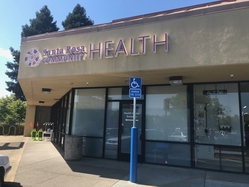
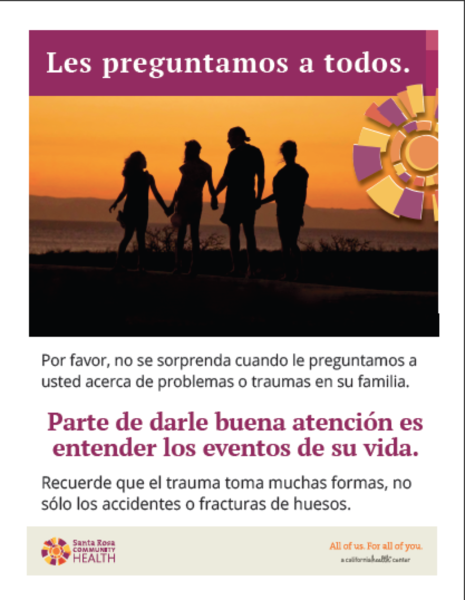
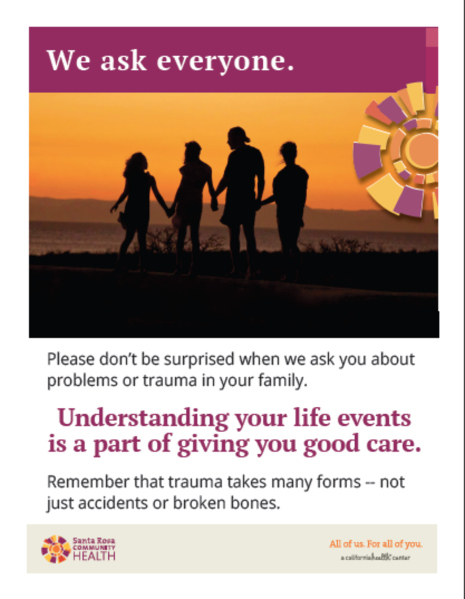
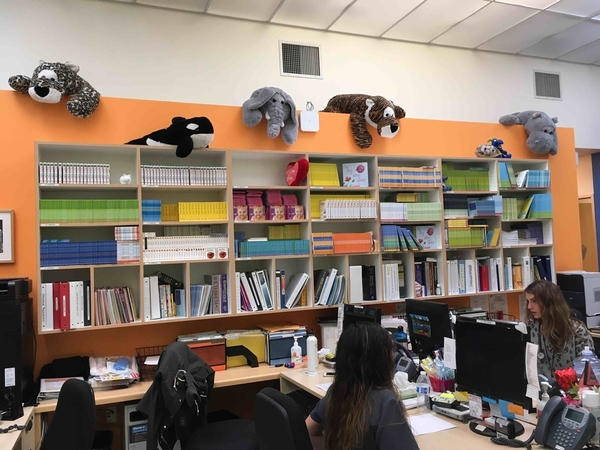





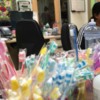




Comments (0)